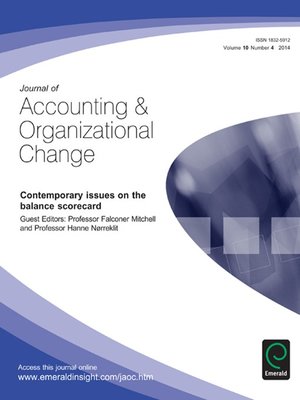Journal of Accounting & Organizational Change, Volume 10, Issue 4
ebook ∣ Journal of Accounting & Organizational Change
By Zahirul Hoque

Sign up to save your library
With an OverDrive account, you can save your favorite libraries for at-a-glance information about availability. Find out more about OverDrive accounts.
Find this title in Libby, the library reading app by OverDrive.



Search for a digital library with this title
Title found at these libraries:
| Library Name | Distance |
|---|---|
| Loading... |
Over the past two and a half decades the BSC (Kaplan and Norton 1992, 1996a, 1996 b, 2000, 2001, 2004) has become a well-established feature of management accounting research and practice. Its popularity among researchers is confirmed by the submission of more than 30 papers for this special issue. The contributions of the accepted papers relate to the generalisation of the BSC framework, the assumption of a cause-and-effect relationship and the organisational impact of BSC measurement.
On the basis of the contributions published in this special issue, we can conclude that the empirical studies of the BSC make a modest foundation for generalising about the framework. We explain this by the fact that the attributes of the BSC framework are weakly defined and the understanding of the concept is flexible. However, the special issue reveals that organisational managers do not subscribe to the assumption of a form of natural law causality. In interaction with each other, the local managers are working on establishing multiple sets of construct causalities. The BSC measures shape the managers' work on the establishment of construct causalities. However, the studies indicate uncertainty about the specific impact on action. It is uncertain whether the measures initiate gaming or stronger construct causality.
We suggest more research in the performance management of construct causalities. For example more insight is needed in how companies organise and manage the establishment of single and multiple sets of construct causalities. Finally, more insight is needed to manage and observe the strength of the established construct causality.







